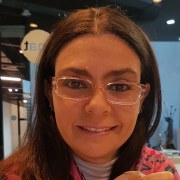Science engagement organisations as citizen labs
Societies are changing, new challenges are emerging and citizens increasingly want to be considered and meaningfully involved in the search for solutions. Living labs, fabrication labs, science shops and citizen science programmes support an inclusive innovation system in which citizens can be empowered to be part of the change they want to see. In this context, science engagement organisations become crucial agents in facilitating exploration and experimentation with new forms of innovation that activate members of civil society through co-creation and citizen participation, as key elements for open science.
In this session, we share different experiences and open a discussion with the audience on the role science museums and cultural centres can play as citizen labs. We identify good practices, failures and the challenges ahead.
Reading tip: check out two Spokes articles: this one on citizen labs by Artur Serra and this one on participation in a research museum by Wiebke Rössig, speaker for this session, and Lisa Debora Jahn.
Session legacy
First of all I want to thank our forus speakers to bring us very enlightment ideas about what Citizens Labs are. It was wonderful to see how different their aproximations were but the objective was the same, try to engage more people with science and to make more informed citizens. Citizen science, open spaces for public debate, city labs are differents ways to address this topic and it was really profitable was to understand what isn't a participatory process.
Even if we tried to let time for discussion and open conversation with the public, the reduced time for the session let us less time to have this interaction. It was necessary to establish the general background, especially for a session where the topic is unknown or difficult to carry out.
Questions were raised in terms to understand what engagement means for our institutions and how we can deal with the different necessities and options that our society faces.
Participants gave us a positive feedback during lunch and diner after the session and it was really inspiring for the next year.
Session speakers
Lead Area for Dialogue and Participation in science and collection
Museum für Naturkunde Berlin, Germany
The Museum für Naturkunde Berlin is opening a new experimental area for participation and open science, where we want to engage visitors, give the opportunity for direct communication and take up social debates with focus on mutual learning. I would like to present our first findings and observations resulting from experimenting with participation in science as a mutual process.
Citizen science is a clear example of what is also called civic science, in terms of broad public engagement with issues deeply related with science and society. As a science engagement organization, Barcelona Ciència promotes various citizen science projects, through facilitating cooperation between researchers and citizens. How we do it? Developing the "CitSci in the neighbourhoods", a program carried out at different civic centres in which citizens and schools carry out real research with a direct impact on the neighbourhood. We want to share the experience of the last three years and new perspective related to libraries and museums.
A City Lab is a space for the exploration and experimentation and a place to inform and inspire the people who are creating the cities of the future. Just an example: during the Rooftop Festival Roef, NEMO City Lab transformed the rooftop of Nemo into a living lab and invited the public to join scientists, artists and city makers through interactive experiments to shape the city of the future.
Contemporary Science Manager
What isn't citizen science? The Science Museum's vision for public engagement that fosters bottom up engagement and open science is still a work in progress. Each of our many experiments with different formats, both in exhibitions and live events, has taught us what we have not managed to achieve in terms of authentic citizen science. But it has informed and encouraged us towards creating a permanent space for such activities. In openly sharing our learnings (and failures) - from activating visitors as "scientists" and not experiment "subjects", to what our audiences consider meaningful engagement, harnessing the museum as a convening space for civil society and pure logistical challenges - we hope to spark discussion on what citizen science could be.





